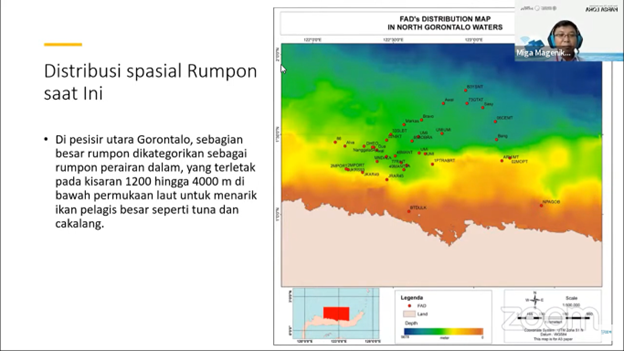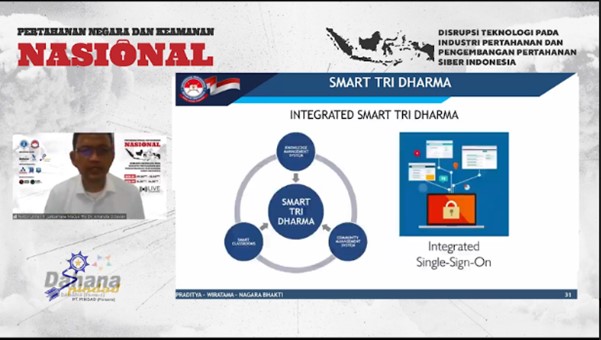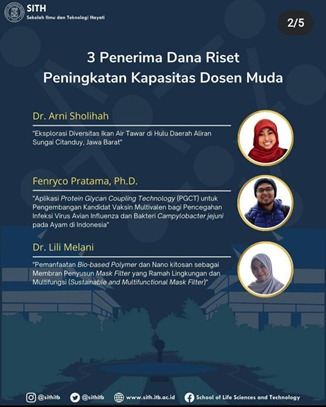ITB Researchers Boost Fishermen's Yield with Marine Geospatial Data in Gentuma Harbor, Gorontalo
By Anggun Nindita
Editor Anggun Nindita

BANDUNG, itb.ac.id — Researchers from the Institute for Research and Community Services (IRCS) at Institut Teknologi Bandung (ITB), in collaboration with the ITB Design Ethnography Laboratory, conducted an online talk show titled "Marine Geospatial Data Utilization for Optimal Placement of Rumpon" on Friday, September 6, 2023. The event featured Miga Magenika Julian, S.T., M.T., from the Hydrography Research Group of the Faculty of Earth Sciences and Technology (FEST), who presented the research and community services aimed at enhancing the prosperity of fishermen in Gentuma Harbor, Gorontalo.
Indonesia, known for its vast archipelago and extensive coastline, boasts diverse marine life. In 2020, the Ministry of Marine Affairs and Fisheries reported an annual valuation of marine commodities reaching USD 1.338 billion. Communities, particularly around Gentuma Harbor, Gorontalo, heavily rely on the sea for their livelihoods.
The predominant fishing method in Gentuma Harbor involves the use of "rumpon," a local term for Fish Aggregating Devices (FADs). However, challenges arise, notably the impact of "blade current" in the Sulawesi Sea, which can wash away rumpons, resulting in significant financial losses for fishermen. Moreover, traditional rumpon placement methods are often ineffective as they don't always align with fish concentration zones.

The analysis integrated data on rumpon spatial distribution, blade current zones, Fishing Potential Zone (ZPPI) geospatial data, and the Zoning Plan for Coastal Areas and Small Islands (RZWP3K). ZPPI helps identify fishing hotspots, maximizing fish catches, while RZWP3K ensures compliance with spatial utilization regulations. The combined analysis provided the basis for recommendations on optimal rumpon installation locations.

Miga Magenika Julian emphasized that optimal rumpon placement should consider three parameters simultaneously: safety from blade current, year-round fishing zone location, and avoidance of interference with shipping routes or conservation zones. The recommendations are categorized into three classes based on these considerations:
1. First class (low recommendation): High exposure to blade current and located in shipping routes or conservation zones.
2. Second class (intermediate recommendation): Safe from blade current, not in shipping routes or conservation zones, but not in the fishing hotspot.
3. Third class (high recommendation): Safe from blade current, not in shipping routes or conservation zones, and located in the fishing hotspot.
"In conclusion, these findings are expected to assist fishermen in installing rumpons in locations safe from blade current, considering areas with the most abundant fish," he concluded.
Reporter: Hanifa Juliana (Urban and Regional Planning, 2020)
Translator: Hanifa Juliana (Urban and Regional Planning, 2020)
Editor: Vera Citra Utami

.jpg)
.jpg)
.png)
.jpg)
.jpg)



